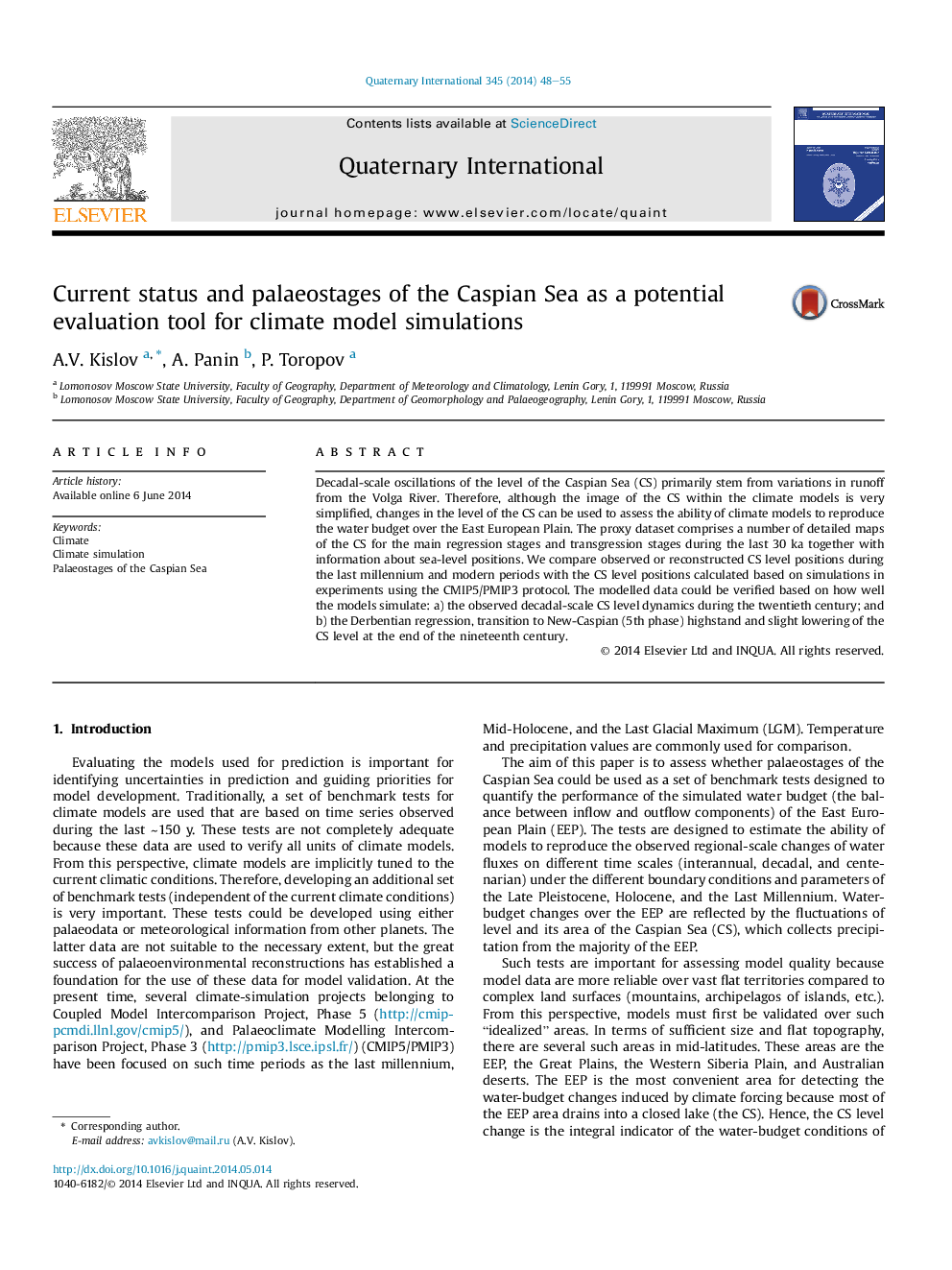| Article ID | Journal | Published Year | Pages | File Type |
|---|---|---|---|---|
| 1041184 | Quaternary International | 2014 | 8 Pages |
Decadal-scale oscillations of the level of the Caspian Sea (CS) primarily stem from variations in runoff from the Volga River. Therefore, although the image of the CS within the climate models is very simplified, changes in the level of the CS can be used to assess the ability of climate models to reproduce the water budget over the East European Plain. The proxy dataset comprises a number of detailed maps of the CS for the main regression stages and transgression stages during the last 30 ka together with information about sea-level positions. We compare observed or reconstructed CS level positions during the last millennium and modern periods with the CS level positions calculated based on simulations in experiments using the CMIP5/PMIP3 protocol. The modelled data could be verified based on how well the models simulate: a) the observed decadal-scale CS level dynamics during the twentieth century; and b) the Derbentian regression, transition to New-Caspian (5th phase) highstand and slight lowering of the CS level at the end of the nineteenth century.
